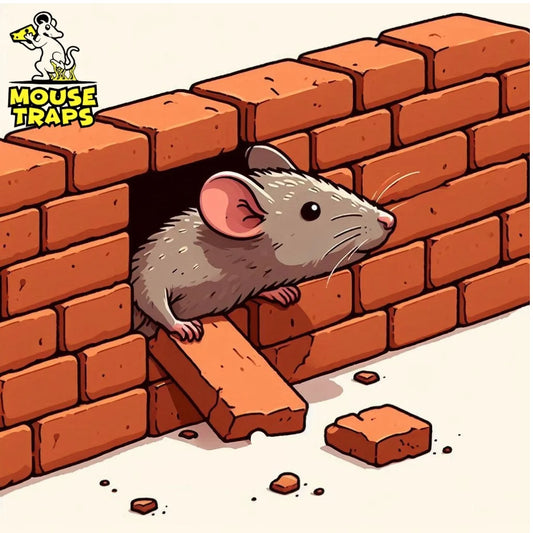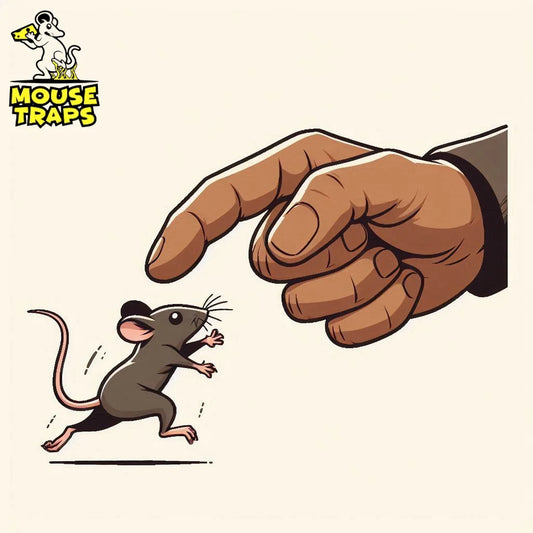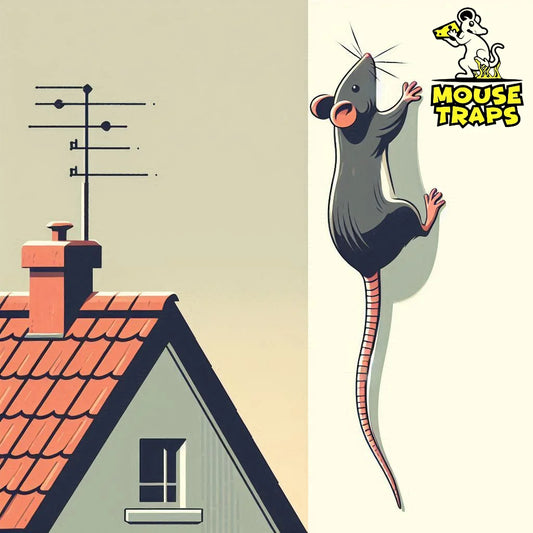Introduction:
In the battle against household pests like mice, finding safe and effective solutions is paramount. One commonly employed method is the use of mouse poison bait stations indoors. Using designated stations provides an regulated method, for administering poison ensuring minimal danger to people and pets. This article explores the intricacies of using indoor mouse poison bait stations covering the process of choosing the station and addressing any drawbacks.
Choosing the Right Bait Station:
The first step in using mouse poison indoors is selecting the appropriate bait station. These stations come in various designs, including disposable and refillable options. Disposable stations offer convenience but require replacement once the bait is consumed, while refillable ones allow for easy replenishment as needed. When selecting the station, for your requirements take into account aspects, like accessibility, longevity and the simplicity of supervision.

Placement and Baiting:
Proper placement of bait stations is crucial for maximizing their effectiveness. Stations should be positioned along walls, in corners, or near areas frequented by mice, such as food sources or entry points. Ensure that stations are placed out of reach of children and pets to prevent accidental exposure. When baiting the stations, use mouse poison specifically formulated for indoor use and follow the manufacturer's instructions regarding the type and amount of bait to use. Securely place the bait inside the station to prevent spillage or tampering.

Monitoring and Safety Precautions:
Regular monitoring of bait stations is essential to gauge rodent activity and replenish bait as needed. Mice might eat the poisoned bait gradually so it's crucial to keep a source to guarantee its efficiency. Handle mouse poison with care, wearing gloves and avoiding direct contact with the bait to minimize risks. Educate household members about the presence of poison bait and the importance of not tampering with the bait stations. Safety should always be a top priority when using rodenticides indoors.

Drawbacks:
-
Delayed Effects: Mouse poison typically works by disrupting the rodent's internal systems, leading to death after a period of time. This means that you may not immediately see results and may need to wait several days or weeks for the infestation to decline.
-
Secondary Poisoning: There's a risk of secondary poisoning if pets or other animals consume mice that have ingested the poison bait. To mitigate this risk, use bait stations designed to prevent access by non-target animals and monitor pets closely.
-
Odor and Cleanup: If a mouse dies inside your home after consuming poison bait, it may emit a foul odor as it decomposes. Additionally, you'll need to locate and dispose of the carcass properly to prevent further issues.
-
Resistance: Over time, mice populations may develop resistance to certain types of poisons, reducing the effectiveness of this method of control.
-
Environmental Impact: Some types of mouse poison can have environmental implications if not used responsibly. Follow label instructions carefully and consider alternative methods if environmental concerns are a priority.
-
Health Risks: Mouse poison poses significant health risks to humans and pets if ingested. It can cause serious illness or even death, especially in small children or animals.
-
Non-Target Wildlife: Poisoned mice can be consumed by predators and scavengers, leading to secondary poisoning in non-target wildlife.
-
Incomplete Elimination: While effective at killing individual mice, poison baits may not address the root cause of the infestation, such as entry points or food sources, leading to continued problems.
-
Unpleasant Cleanup: If mice die in hidden or inaccessible areas, they can create foul odors and attract other pests, requiring additional cleanup efforts.
Safety Tips:
- Always read and follow the label instructions carefully when using mouse poison.
- Place bait stations in areas inaccessible to children and pets.
- Use tamper-resistant bait stations to reduce the risk of accidental ingestion.
- Monitor bait stations regularly and replace bait as needed.
- Consider alternative methods, such as trapping or sealing entry points, to prevent future infestations.
Benefits:
-
Convenience: Poison baits are easy to use and can be placed in strategic locations where mice are active, such as along walls or in hidden corners.
-
Cost-Effective: Poison baits are often more cost-effective than hiring professional exterminators or using other methods that require ongoing maintenance.
Note:
Regardless of the benefits of and effectiveness using poison to kill rodent always cause a degree of health concern for house owners for their beloved children and pet. Since, nothing is perfect bait station itself has flaws. It would be good to choose a method that posses no harm to children and animals. Live Humane Traps and Sticky Glue traps are both non-toxic, effective and cheap option to get rid of rodents.
Live Humane Traps:
Live mouse traps are mechanical devices designed to capture mice without injuring them. These traps typically consist of a plastic or metal housing with one or more entry points and a mechanism that triggers the door to close once the mouse enters. The captured mouse remains unharmed inside the trap until it can be released outdoors or in a remote location away from the home. Using traps is a way to deal with rodents as it lets homeowners catch mice without having to use harmful methods.

Benefits of Live Mouse Traps:
-
Humane Capture: Live mouse traps provide a humane way to capture mice without causing them harm. Instead of killing the rodents, these traps allow for their safe capture and subsequent release into the wild away from the home.
-
Reusable: Most live mouse traps are reusable, allowing for multiple captures without the need for continual replacement. This makes them a cost-effective and environmentally friendly option for long-term rodent control.
-
Safe for Pets and Children: Live mouse traps pose minimal risk to pets and children since they do not involve the use of toxic substances. They typically feature secure enclosures that prevent accidental contact with captured mice.
-
Easy to Set Up and Use: Live mouse traps are generally easy to set up and use, requiring no special skills or tools. They often feature simple mechanisms for baiting and releasing captured mice.
-
No Odor or Cleanup: Unlike other rodent control methods that may result in foul odors from dead mice, live traps eliminate the need for cleanup and disposal of carcasses. This can make them more appealing for indoor use.
Sticky Glue Traps:
Sticky glue pad traps, also known as glue boards or glue traps, are adhesive-based devices used to immobilize mice upon contact. These traps feature a flat surface coated with a strong adhesive that ensnares mice when they step onto it. Once trapped, mice are unable to free themselves from the sticky surface, allowing for easy disposal of the trap along with the captured mouse. Sticky adhesive pads are an option compared to bait traps making them ideal, for households, with pets or young children.

Benefits of Sticky Glue Traps:
-
Effective for Small Spaces: Sticky glue traps are highly effective in small spaces where traditional traps may be difficult to place. Their flat design allows them to be placed along walls, under furniture, or in narrow gaps where mice commonly travel.
-
No Escape: Once a mouse comes into contact with a sticky glue trap, it becomes firmly stuck, preventing escape. This ensures a high capture rate and reduces the likelihood of mice returning to the area.
-
Easy to Monitor: Sticky glue traps provide a visual indicator of rodent activity, making it easy to monitor the effectiveness of your rodent control efforts. Check traps regularly to assess whether additional measures are needed.
-
No Bait Required: Unlike live traps that require bait to attract mice, sticky glue traps rely solely on their adhesive surface to capture rodents. This can be advantageous in situations where bait may not be effective or desired.
-
Discreet and Disposable: Sticky glue traps are typically discreet and can be disposed of after use, making them convenient for both indoor and outdoor use. Simply discard the trap along with the captured mouse for easy cleanup.
Conclusion:
Using indoor mouse poison bait stations can play a role in a plan to control rodents. By choosing and positioning these bait stations keeping an eye, on behavior and prioritizing safety measures homeowners can effectively handle mouse infestations while safeguarding household members and pets. Nonetheless it's crucial to understand the downsides of using poison baits and explore rodent control methods when necessary. Seeking advice from a pest control expert can offer tailored recommendations for your circumstances ensuring a safe and efficient approach, to dealing with indoor mouse infestations.




